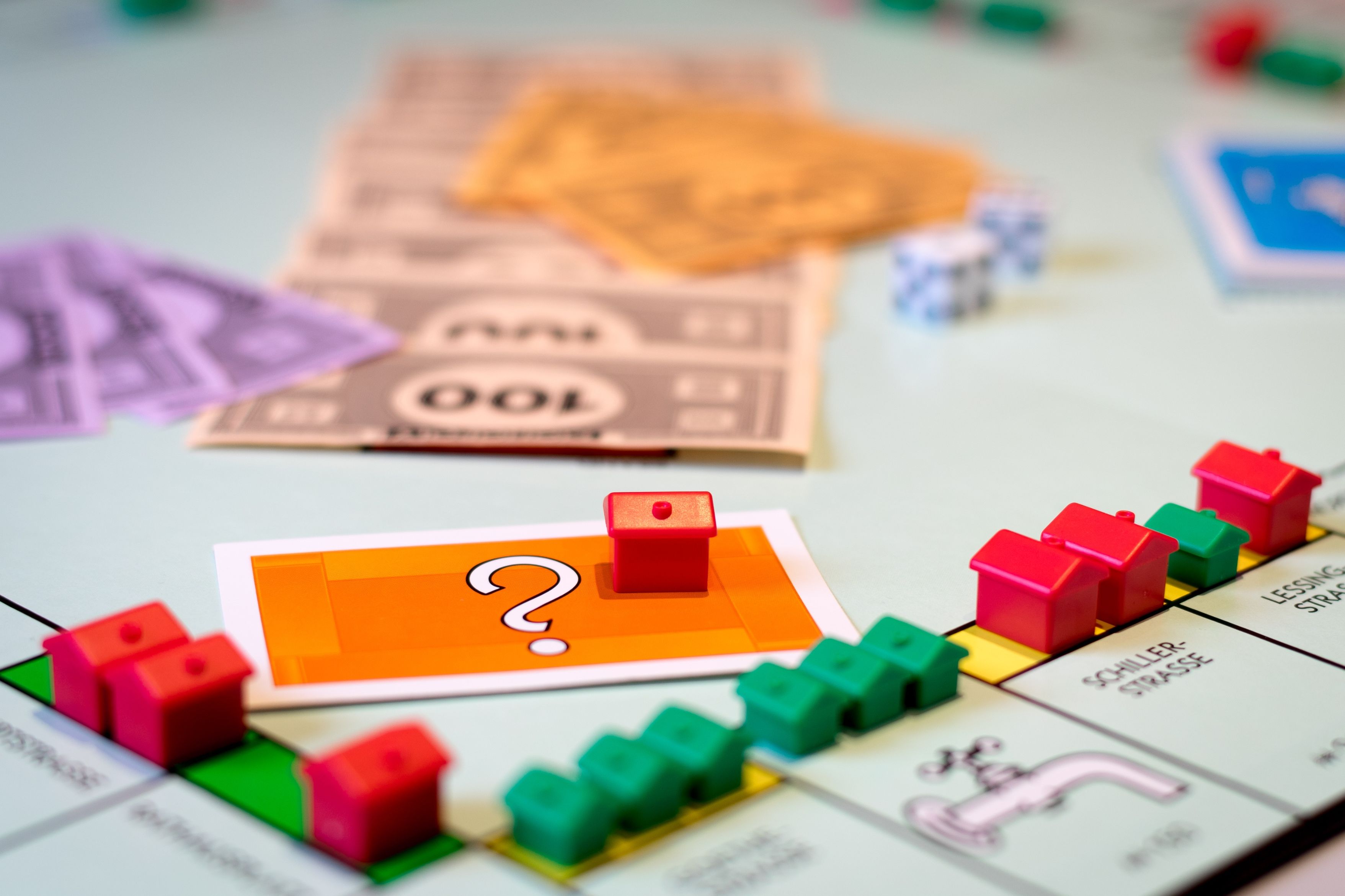Why Are Landed Home Sales Hitting New Highs Despite Covid-19?
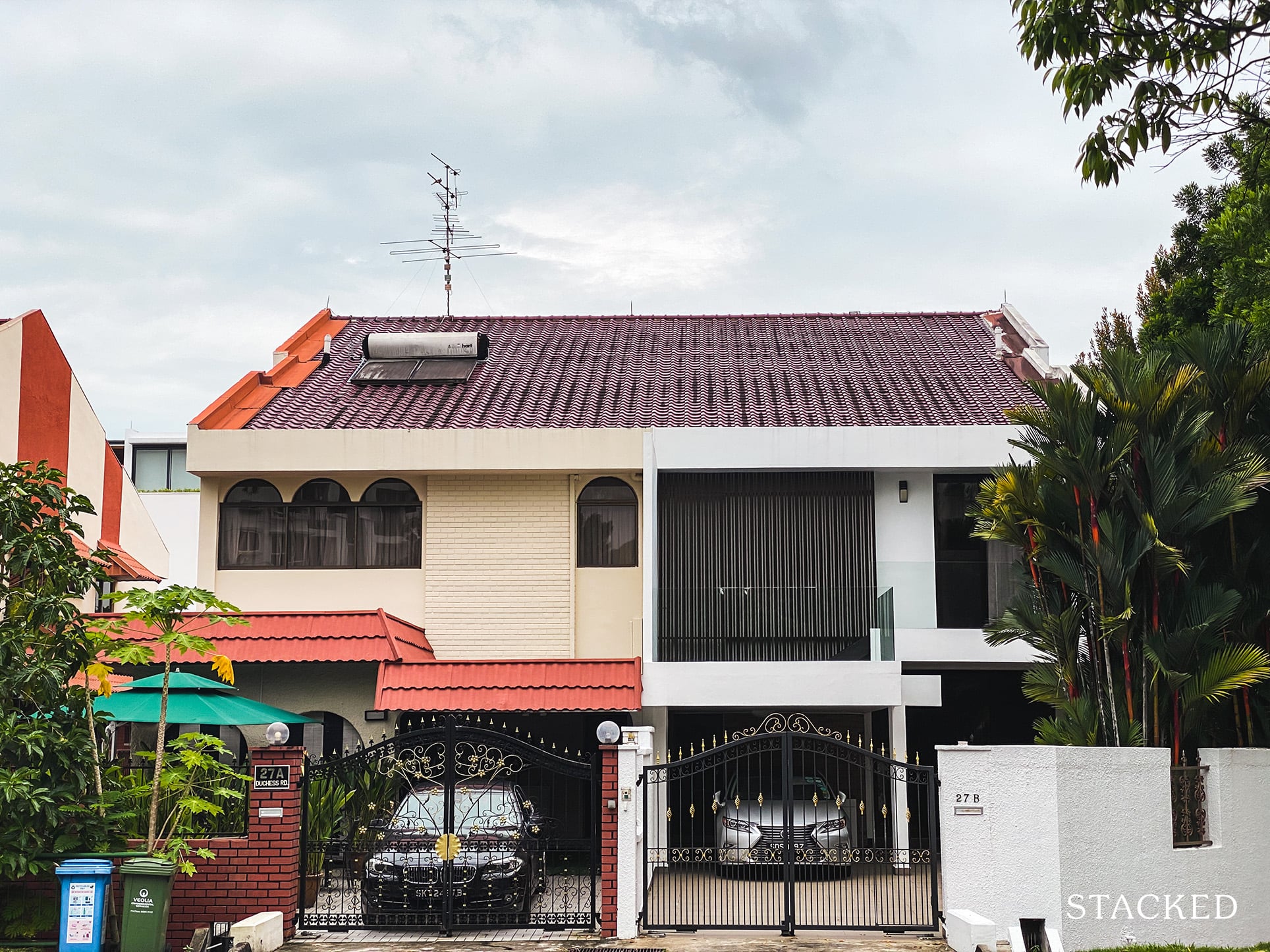
Get The Property Insights Serious Buyers Read First: Join 50,000+ readers who rely on our weekly breakdowns of Singapore’s property market.
A seasoned content strategist with over 17 years in the real estate and financial journalism sectors, Ryan has built a reputation for transforming complex industry jargon into accessible knowledge. With a track record of writing and editing for leading financial platforms and publications, Ryan's expertise has been recognised across various media outlets. His role as a former content editor for 99.co and a co-host for CNA 938's Open House programme underscores his commitment to providing valuable insights into the property market.
If you’re like most people, you might guess the most expensive property segment – landed property – will fare worst in the downturn. After all, who would buy a bungalow or Semi-D in Singapore’s worst economic situation to date, right?
The answer, apparently, is “way more people than we’d imagine”.
In fact, landed home sales are at an all time high as of Q3 2020. There were 544 landed home transactions this quarter, according to a report from OrangeTee & Tie. We checked on Square Foot Research to see if the data corresponds – while it’s not an exact match, the two are quite close:
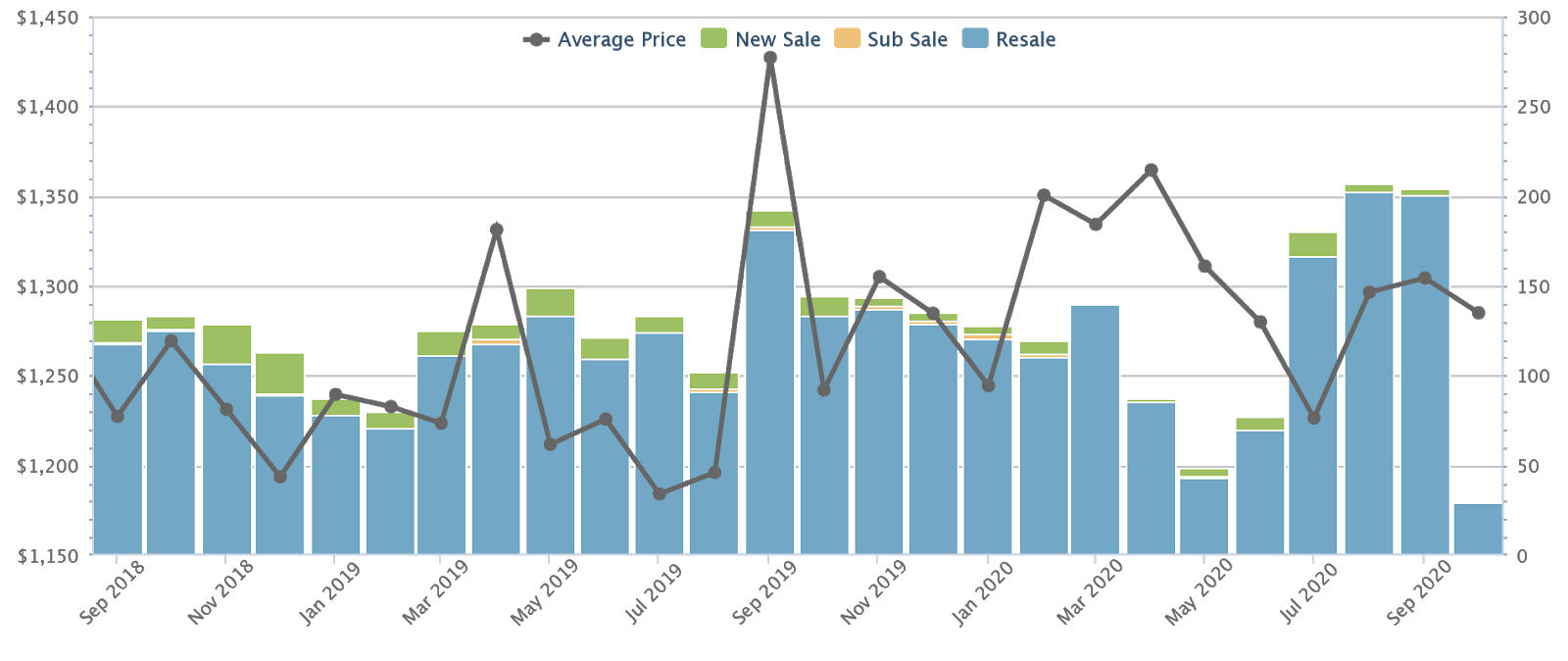
Square Foot Research shows 591 landed home transactions for Q3 (counting both new and resale): that’s 180 units in July, 202 units in August, and 200 in September. This is a sharp rebound from Q2, where total transactions numbered 212. This is an increase of 179 per cent.
In terms of price, landed homes across Singapore averaged $1,280 psf at the end of June 2020. As of end-September 2020, they averaged $1,304 psf, up around 1.87 per cent.
This is down around 8.6 per cent from the last peak, in September 2019; but it’s a notable recovery from the Circuit Breaker period.
However, some analysts we spoke to pointed out a disparity between freehold and leasehold landed gains.
Naturally, we checked the price movement along those lines.
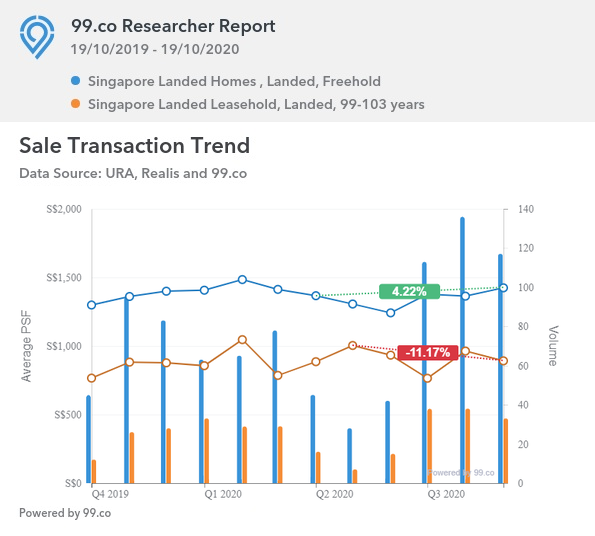
The difference is significant – freehold landed properties from $1,367 to $1,424 psf since Q2, up around 4.2 per cent. Conversely, leasehold landed property values have fallen in the same period – they are down around 11.1 per cent, from $1,004 to $892 psf.
As such, we can see leasehold landed has not benefited proportionally from the current demand surge, and is in fact doing worse. We’ll explain the possible reasons below.
Why are landed home transactions and prices rising?
- Past performance of landed properties during downturns
- Continued faith in scarcity value
- A response to a low interest rate environment
- Pent-up demand from the Circuit Breaker period
1. Past performance of landed properties during downturns
The most significant recent recession, before Covid-19, would be the Global Financial Crisis. For investors, the performance of landed homes during that time might still be fresh in the memory:
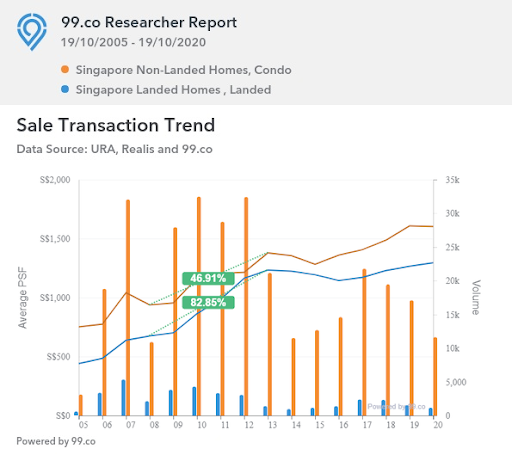
Between the troubled period 2008/9 to 2013, property prices began to peak as investors rushed into the safe haven of Singapore real estate.
Between 2008 to 2013, non-landed private homes managed a percentage gain of almost 47 per cent, from around $938 psf at the time of the crisis, to $1,378 psf by 2013.
In the same time however, landed properties appreciated by 82.8 per cent, soaring from $675 psf to $1,233 psf.
The property market as a whole proved that it could thrive during a downturn, and landed property was the best performer of the lot. As such, it’s not surprising that investors – or even some affluent home buyers – have chosen landed homes as a safe place to park their assets.
2. Continued faith in scarcity value
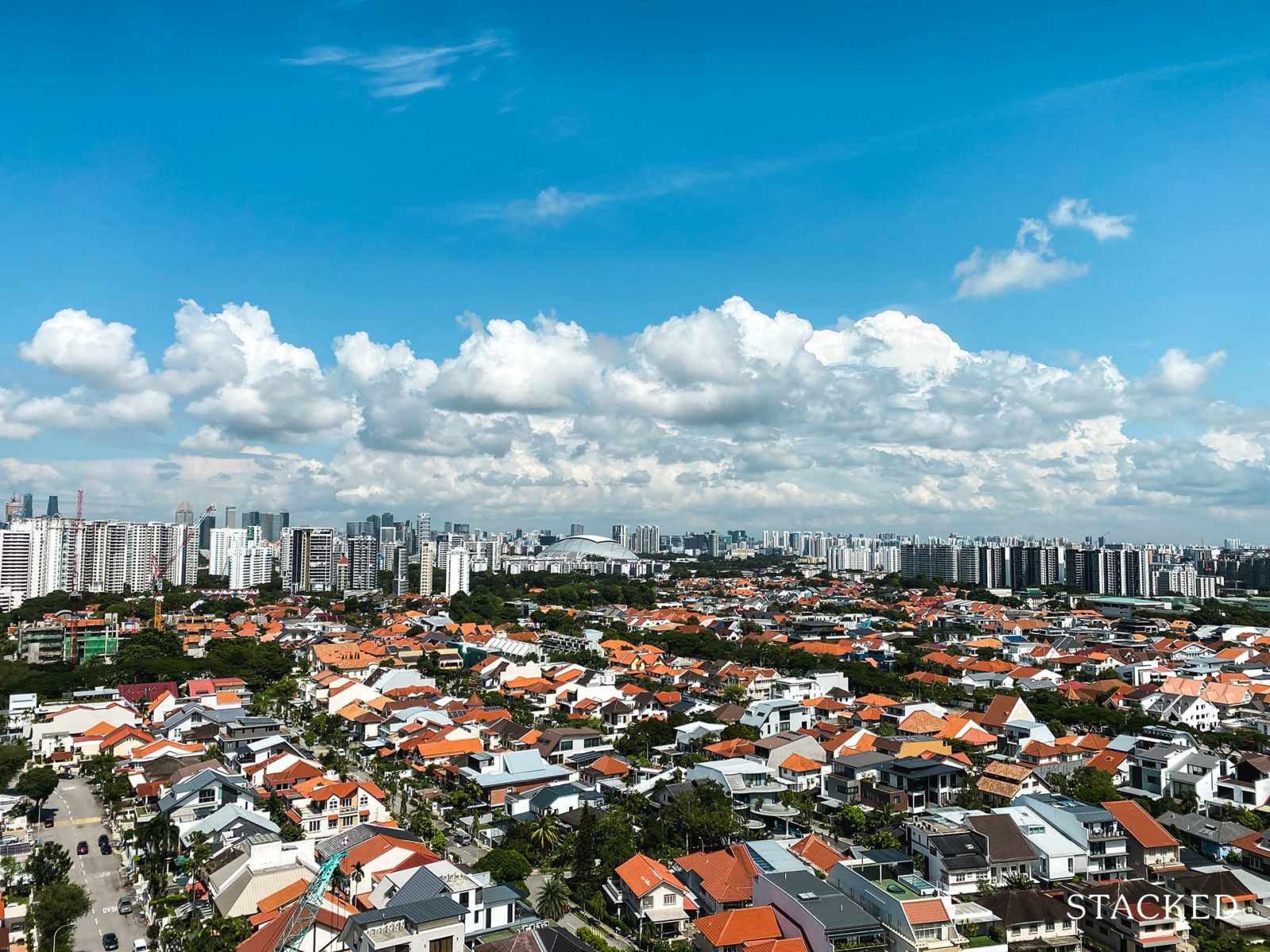
The main draw of landed properties is their scarcity. As you should know by now, demand and supply plays an important role in real estate prices. There are only 39 residential areas in the whole of Singapore designated as Good Class Bungalow Areas (GCBA), for instance – and as of Q1 2019, URA noted there were only 73,105 landed private homes in Singapore.
For readers who are unaware, the Singapore government does not give out any more freehold or 999-year leases. This is under Rule 10 of the State Lands Rules of the State Lands Act (Cap. 314, Section 3), which says:
More from Stacked
Our Resale HDB Buying Journey: $700k+ Home At SkyTerrace@Dawson (Ethnic Quota Helped)
From the long wait for Permanent Resident (PR) status, to the process of house hunting, finding an HDB flat can…
“The title ordinarily to be issued shall be a lease for a term not exceeding 99 years, except that where the land is not capable of independent development…”
This makes landed freehold property scarce, and in almost perpetual demand. In particular, the limited supply of freehold landed means it tends to climb faster than non-landed homes, whenever we see an upswing in property values.
So there is solid reasoning behind the landed property surge in Q3: buyers are hunting for protected freehold homes to park their cash in, and they aren’t just buying any landed homes on a spree (or else leasehold prices wouldn’t show such a great disparity).
3. A response to a low interest rate environment
Interest rates are being kept at near-zero by the United States Federal Reserve. This is likely to last till 2022, to stimulate US markets in a downturn – again, a similar situation to what we saw in the last Global Financial Crisis.
The interest rate cut has two effects that helps the landed housing segment:
First, the lower interest rates mean they get to buy for cheap; rates at present are around 1.3 per cent per annum; half of what you’d pay for an HDB loan (if you don’t have such a low rate, message us on Facebook and we may be able to remedy it).
If the bank will lend enough to buy a freehold landed home, at a low interest rate of 1.3 per cent per annum, it’s unsurprising that many will bite. As we’ve seen above, the appreciation of the landed property alone effectively pays for the interest, and these buyers are “borrowing for free”.
Second, low interest rates also mean lower bond yields, with US Treasury Yields slipping below one per cent for the first time. Given the unattractive returns of such products, plus the volatility of the stock market during Covid-19, some buyers will be more inclined toward property.
4. Pent-up demand from the Circuit Breaker period
This one doesn’t take much explanation: the huge percentage increase in volume is because we’re coming from a low base. Q2 2020 made it almost impossible for agents to sell landed homes, as there were no viewings allowed.
It’s also possible that buyers at the time were still in a wait-and-see mode; they could have been waiting for the possibility of discounts, such as if the market would be hit by desperate sellers who needed to liquidate.
By this point, it’s become apparent that sellers haven’t flinched. Not only has MAS provided support through deferred mortgages, Singaporeans owners have significant holding power thanks to enforced prudence (e.g. loan curbs such as the Total Debt Servicing Ratio).
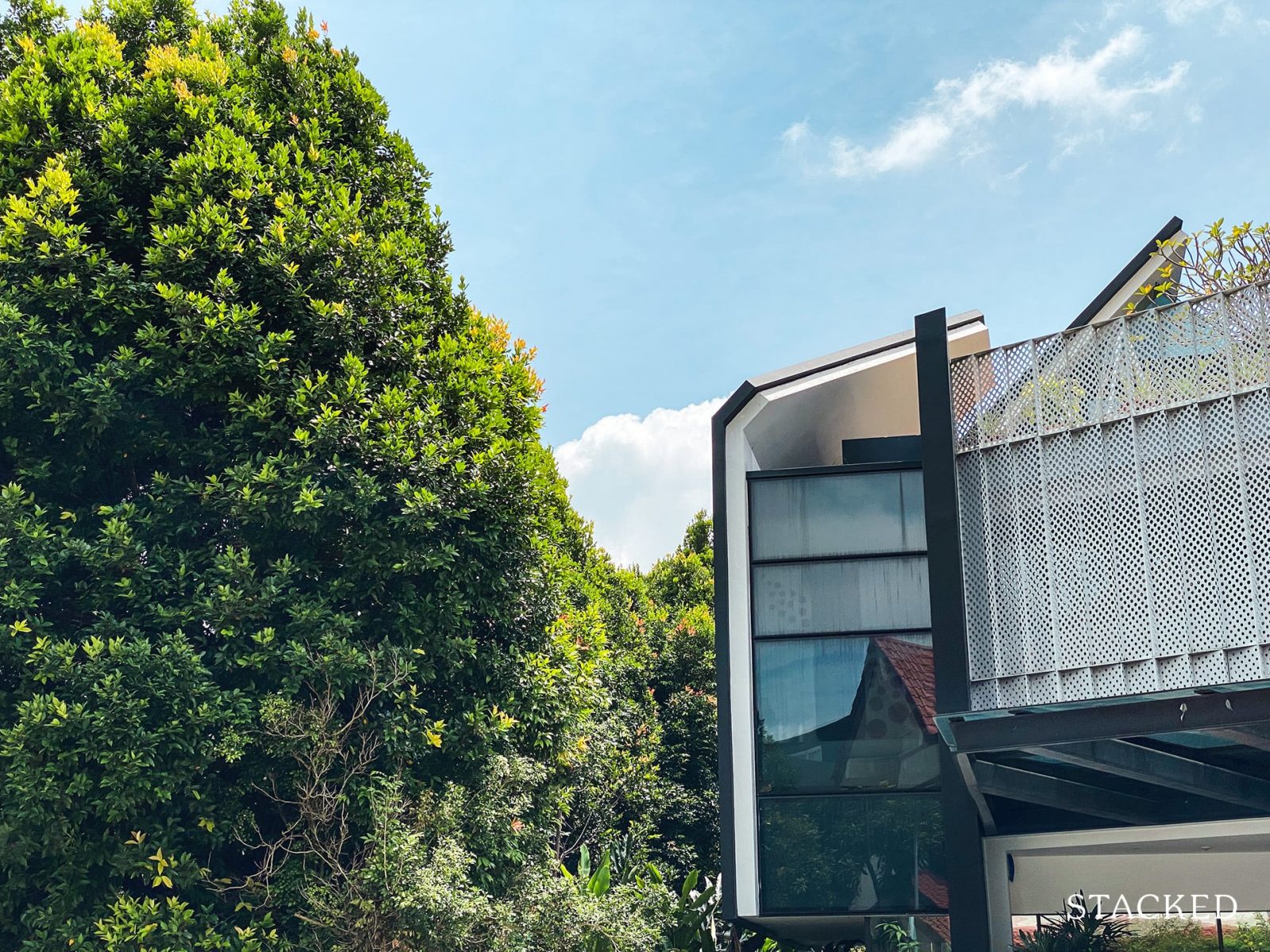
Please don’t take this as a suggestion to run out and buy the first landed home you can afford
Not all landed properties – even freehold ones – are guaranteed winners. Landed homes lock up a larger portion of your capital, and can be very expensive to maintain if you pick the wrong one.
Also, given that Covid-19 will lower the number of expatriate workers on our shores, landed properties are tough to rent; it’s a rare Singaporean who rents a bungalow or terrace house.
Follow us on Stacked or drop us a message if you have any questions about buying a landed property.
If you’d like to get in touch for a more in-depth consultation, you can do so here.
Ryan J. Ong
A seasoned content strategist with over 17 years in the real estate and financial journalism sectors, Ryan has built a reputation for transforming complex industry jargon into accessible knowledge. With a track record of writing and editing for leading financial platforms and publications, Ryan's expertise has been recognised across various media outlets. His role as a former content editor for 99.co and a co-host for CNA 938's Open House programme underscores his commitment to providing valuable insights into the property market.Read next from Property Market Commentary

Property Market Commentary Why The Singapore Property Market Will Be Different In 2026 — And It’s Not Just About Prices

Property Market Commentary 2025 Year-End Review Of The Singapore Property Market: What The Numbers Reveal

Property Market Commentary How The HDB Resale Market Performed In 2025, And What It Means For 2026 Prices

Property Market Commentary 4 Key Trends Reshaping Singapore’s New Launch Condo Market In 2026
Latest Posts

Singapore Property News HDB Resale Prices Finally Slowed in 2025 — Will It Continue in 2026?

Singapore Property News Breaking News: District 23 Condo Sells Out In Under Two Years At $2,120 Psf Average

On The Market Here Are The Cheapest 3-Bedroom Condos in Central Singapore You Can Still Buy From $1.15M

Pro This 21-Year-Old Condo Didn’t Sell Out Initially, Yet Became A Top Performer

Editor's Pick What I Only Learned After My First Year Of Homeownership In Singapore

Singapore Property News Why More Land Doesn’t Automatically Fix Housing In Singapore

On The Market Here Are The Cheapest 4-Room HDB Flats in Central Singapore You Can Still Buy From $490K

Editor's Pick Should We Buy An Old 99-Year Leasehold Condo To Live In: Will It’s Value Fall When The Lease Runs Out?

Pro How A Once “Ulu” Condo Launched In 1997 Became A Top Performer

Editor's Pick I Reviewed A New Launch 4-Bedroom Penthouse At Beauty World

Editor's Pick Why Singaporean Families Are Looking At This Landed Enclave From Around $4M

Singapore Property News Lentor’s First Condo Is Complete — The Early Profits May Surprise You

Property Advice We Own A $800K 1-Bedder And A $1.1M 3-Bedder: Is It Possible To Upgrade To A 4-Bedder Condo?

On The Market These Are Some Of The Cheapest 5-Room HDB Flats Left In Central Singapore

Pro This 698-Unit Ang Mo Kio Condo Launched At The Wrong Time — And Still Outperformed Peers



